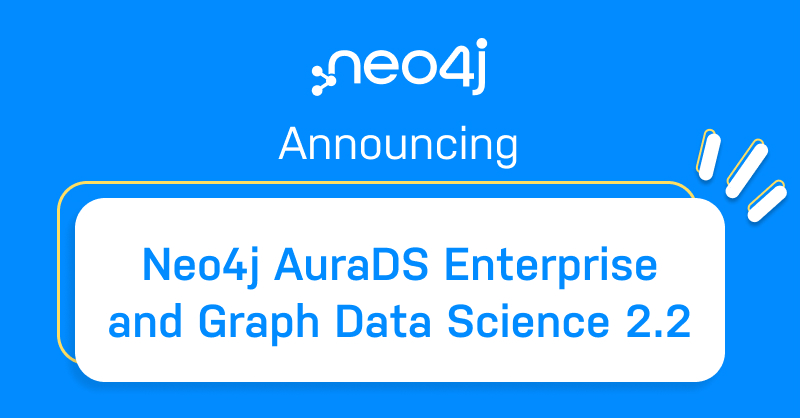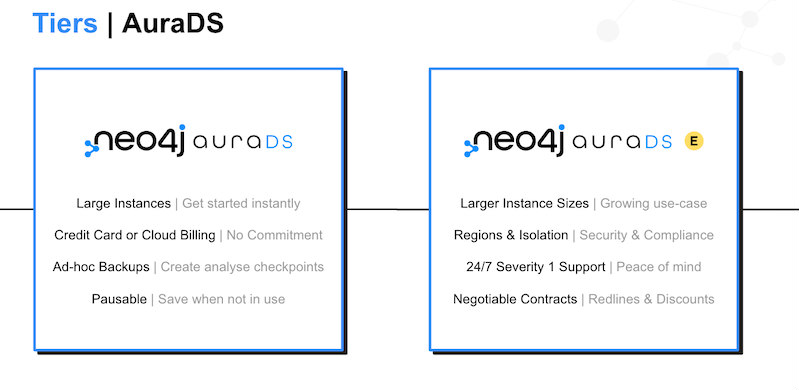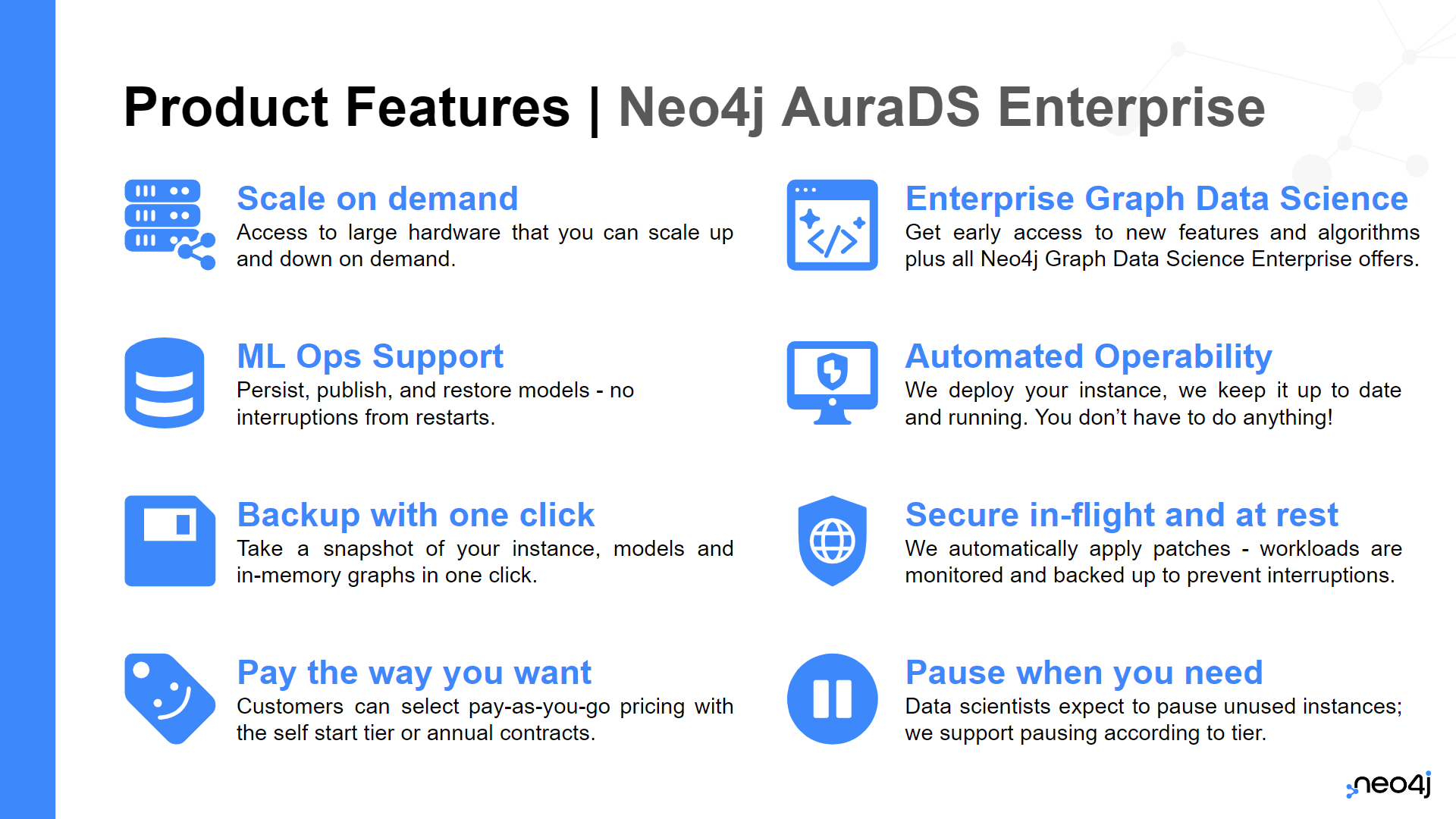 It has been an exciting year for data scientists at Neo4j. In April, we launched Neo4j Graph Data Science 2.0 and Neo4j AuraDS Professional, our first self-service, cloud hosted data science offering. Today, I’m excited to share some new additions to our Data Science foundation with the release of Neo4j AuraDS Enterprise and Neo4j Graph Data Science 2.2, now generally available.
It has been an exciting year for data scientists at Neo4j. In April, we launched Neo4j Graph Data Science 2.0 and Neo4j AuraDS Professional, our first self-service, cloud hosted data science offering. Today, I’m excited to share some new additions to our Data Science foundation with the release of Neo4j AuraDS Enterprise and Neo4j Graph Data Science 2.2, now generally available. With our latest releases of Neo4j AuraDS Enterprise and Neo4j Graph Data Science 2.2, it is our goal to help data scientists and machine learning engineers make better predictions and move to production faster using their existing data.
Here’s how:
Neo4j AuraDS Enterprise builds off the momentum of AuraDS Professional. Both are fully managed and hosted on Google Cloud for effortless scalability, so you can focus on using graphs in your machine learning pipelines, not managing on-premises hardware or your own cloud instance. Plus, you get access to all the benefits of the Neo4j Graph Data Science library, including a catalog of over 65 pretuned algorithms.
Neo4j AuraDS Enterprise goes beyond AuraDS Professional with:
- Larger cloud instances: Support an expanding number of use cases with up to 384 GB per instance with our new AuraAPI*.
- Enterprise grade security: Up-level your security to support a wider number of users with Single Sign On (SSO) enablement and secure deployment in any Google Cloud region with Virtual Private Cloud (VPC) isolation.
- 24/7 Severity 1 support: Have peace of mind, even with the most demanding projects, with premium support at any time of day.
Compare pricing plans →

Neo4j Graph Data Science 2.2
Neo4j Graph Data Science 2.0 was a game-changer for graph-enabled machine learning and we continue to add new capabilities and benefits with Neo4j Graph Data Science 2.2.Some notable highlights include:
- Context-rich Machine Learning Pipelines: We’ve made it easy to configure node labels or relationship types to your machine learning pipelines, to provide more context and generate a more robust and diverse set of graph features in your ML pipelines.
- Graph Native Deep Learning with Multilayer Perceptrons (MLPs): In addition to linear regression and random forest, you can now choose and configure MLPs, a type of feed forward neural network, as a model candidate in Link Prediction and Node Classification pipelines.
- Faster Model Training with Graph Sampling: Reduce compute intensity training inductive models. Graph Sampling uses a smaller representation subgraph to train models faster and reduce resource consumption.
- Integrate With Other Graph Libraries: Use Neo4j Graph Data Science projections in other Graph ML libraries, like Deep Graph Library (DGL), PyG, and Tenserflow GNN. Combine graph topology export with graph sampling to scale graph neural networks (GNNs) to larger graphs. You can also deploy models trained using open source ML libraries in your Neo4j Graph Data Science workflows.

Ready to get started?
- What’s New: Check out What’s New in Neo4j Graph Data Science to learn more about Neo4j Graph Data Science 2.2.
- Release Changelog: Browse the release changelog for technical information on each release.
- Sandbox: Try the newest releases for yourself in the Neo4j Sandbox and follow along with our pre-made guides and worked examples.
Register Now



